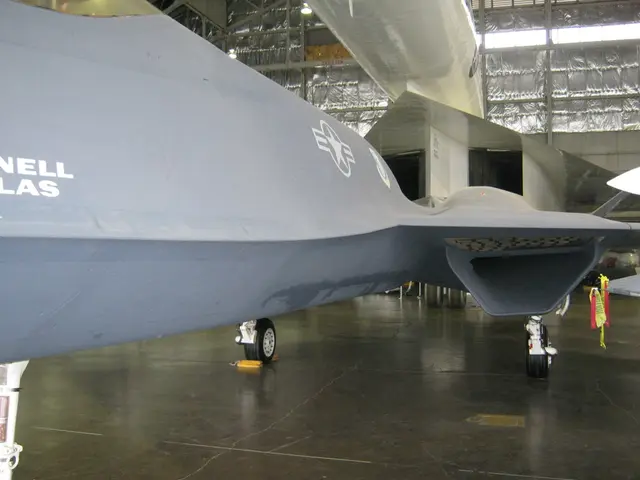B-1 Bombers Soar alongside South Korea's Forces, as Leaders Highlight Importance of Advanced Exercises
U.S. and South Korean forces conducted a joint aerial exercise on February 20, with two B-1 bombers leading the drills over Korean airspace. The purpose of the training was to counter potential threats from North Korea, according to officials.
Joining the B-1s were various aircraft from both U.S. and South Korean forces. These included F-16s from the 51st Fighter Wing at Osan Air Base, South Korea, F-35Bs from the 1st Marine Aircraft Wing based in southern Japan, four ROK Air Force F-35As, and two F-15Ks from the ROK Air Force.
The long-range B-1 bombers were stationed at Andersen Air Force Base in Guam for the past month. The F-16s escorted the bombers into South Korean airspace, while the F-35Bs came from Marine Corps Air Station Iwakuni.
Lt. Gen. David R. Iverson, Seventh Air Force commander, stated that such training is essential for maintaining a high level of readiness. "Each time our aircrew plan, execute and debrief together, we build proficiency in our tactics, techniques and procedures to defend the Alliance, if required," Iverson said.
The South Korean Ministry of National Defense explained that the exercise demonstrated the U.S.'s extended deterrence capability against North Korea's growing nuclear and missile threats. It also aimed to bolster the interoperability of the South Korea-U.S. combined forces.
In a press conference held a day prior, Maj. Gen. Jason R. Armagost, head of the 8th Air Force, mentioned that the U.S. and South Korea will continue to focus on integrating nuclear and conventional forces while maintaining close vigilance on North Korea.
Following State Department approval in November, the F-15K fleet is set for a $6.2 billion upgrade, which includes advanced mission computers, radar systems, missile warning systems, and technical support. However, specific details about this upgrade's current status were not available at the time of publication.
This was the first Bomber Task Force of 2025, with four B-1s being deployed from Ellsworth to Anderson in January. These B-1s participated in a trilateral flight with F-15Ks from the ROK Air Force and F-2s from the Japanese Air Self-Defense Force on the same day.
The three nations have conducted trilateral air exercises multiple times since their first in October 2023. However, recent political changes in Japan, South Korea, and the U.S. may impact future military exercises. The impact of these changes remains to be seen.
- The long-range bombers, specifically the B-1s, were previously stationed at Andersen Air Force Base in Guam for a month.
- The South Korean Ministry of National Defense emphasized that the exercise showcased the U.S.'s extended deterrence capability against North Korea's escalating nuclear and missile threats.
- During the joint aerial exercise, aircraft from various branches of both countries' forces, such as F-16s and F-35s, were involved in escorting the B-1 bombers.
- The upgrading of the F-15K fleet, worth $6.2 billion, is planned, including advanced mission computers, radar systems, missile warning systems, and technical support, but details about its current status were not available at the time of publication.
- In the near future, the aerospace industry, including finance backing, will play a crucial role in balancing the defense strategies of the U.S., South Korea, and Japan as they navigate space and counter potential threats arising from their shared borders.








